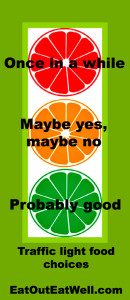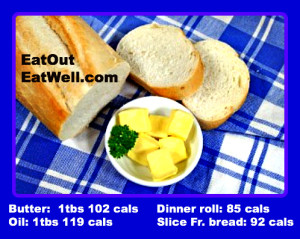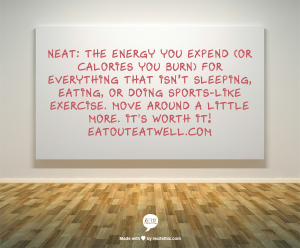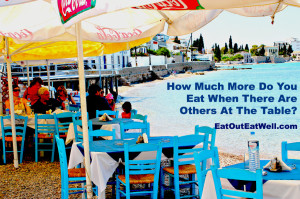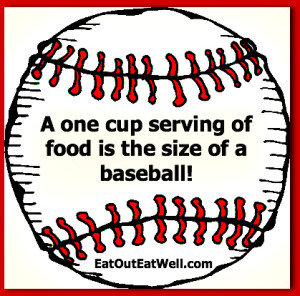 It’s awfully hard to gauge how much food you’re putting on your plate – and even harder to figure out how much food you’re popping into your mouth when you eat directly from a multi-serving bag of food – like a big bag of chips.
It’s awfully hard to gauge how much food you’re putting on your plate – and even harder to figure out how much food you’re popping into your mouth when you eat directly from a multi-serving bag of food – like a big bag of chips.
Portion size is critical to managing your weight. One helpful idea is to use familiar objects as visual guides to “guesstimate” portion sizes.
One Cup Is About The Size Of A Baseball
The suggested serving size for many food items, particularly produce, is a cup. The suggested portion size for many denser items, like pasta, rice, or ice cream is a half a cup, so two servings – which is, at minimum, what most of us eat, would equal a cup.
A Baseball, Not A Softball
A cup is about the size of a baseball – a baseball, not a softball. So a cup of cooked greens, a cup of yogurt, a cup of beans, or a cup of cantaloupe should all look like the size of a baseball – but with obviously different calorie counts.
Here are some of the CDC’s examples of one-cup servings:
- 1 small apple
- 1 medium grapefruit
- 1 large orange
- 1 medium pear
- 8 large strawberries
- 1 large bell pepper
- 1 medium potato
- 2 large stalks of celery
- 12 baby carrots or 2 medium carrot
- 1 large ear of corn
It’s easy to visualize a small apple or a medium potato as about the size of a baseball. It’s more difficult with an ear of corn! But, for most food products it is possible to think “baseball” and pour or cut or pick (as in the case of fruit) a similarly sized portion.
This is Tip #3 for Week 3 of the “lose 5 pounds in 5 weeks challenge.” Let everyone know how you’re doing! Post your results and/or struggles and suggestions on Eat Out Eat Well’s page on Facebook.
